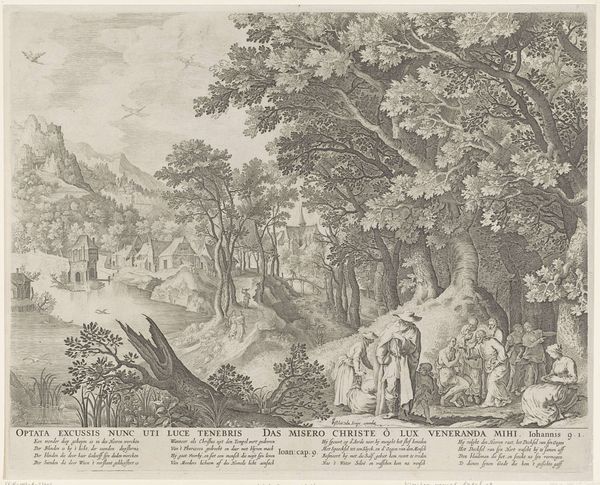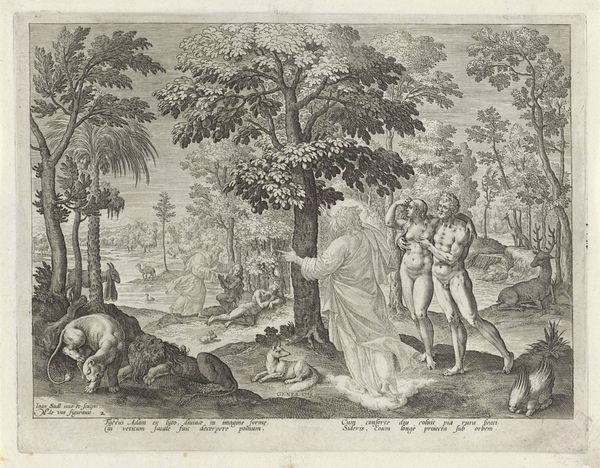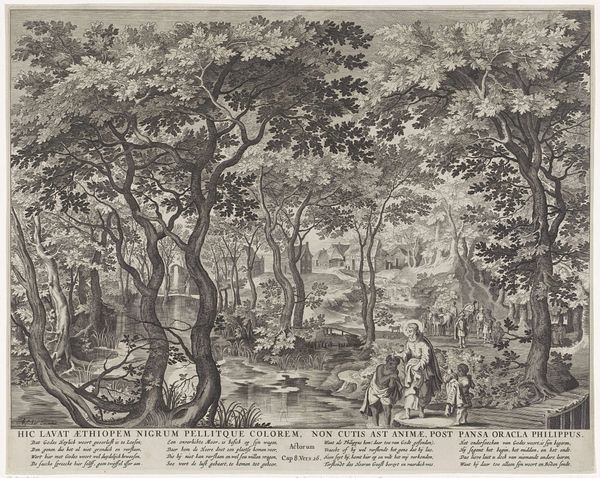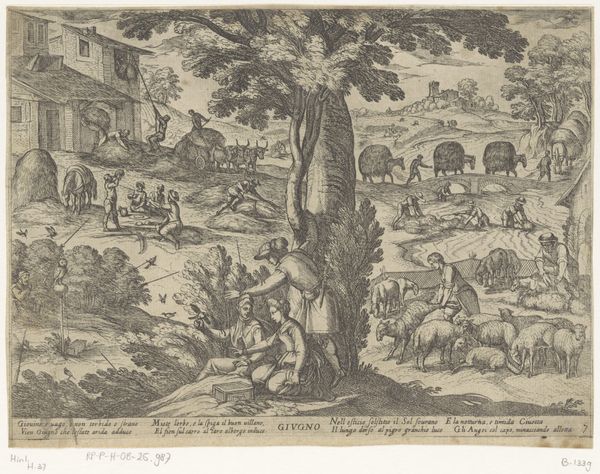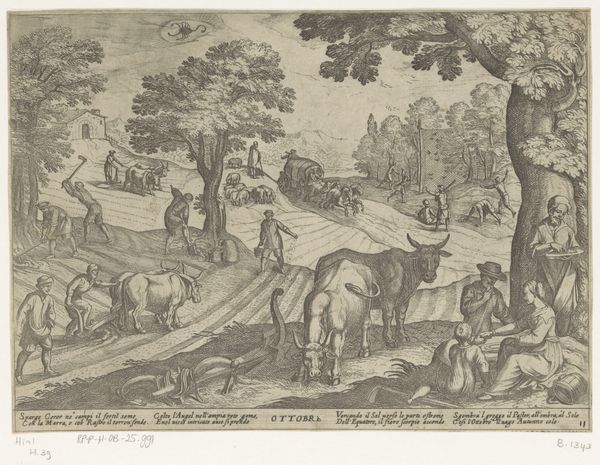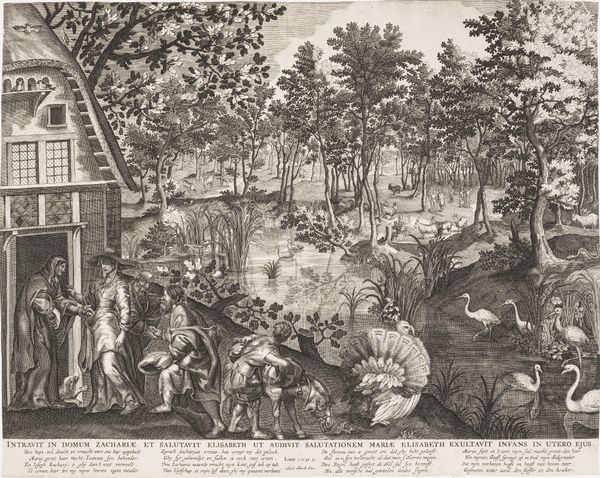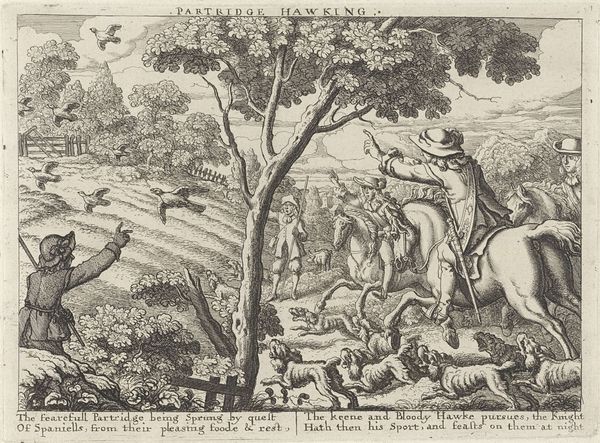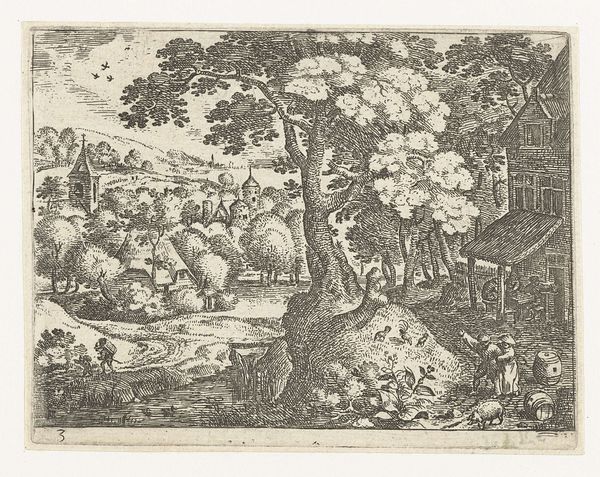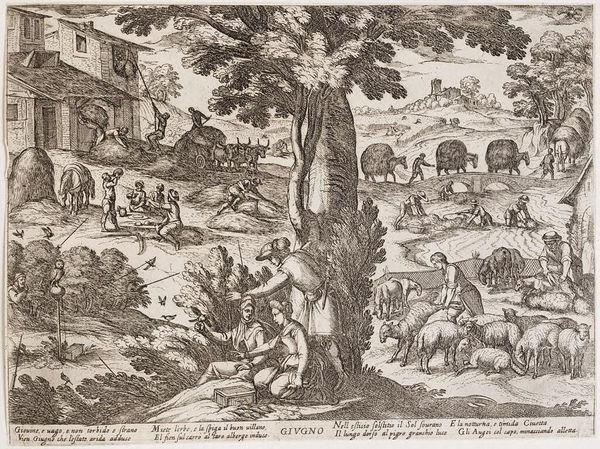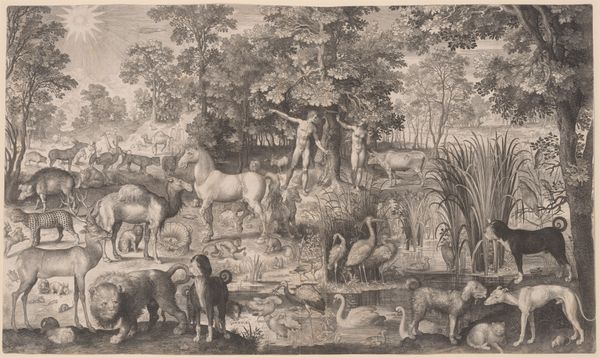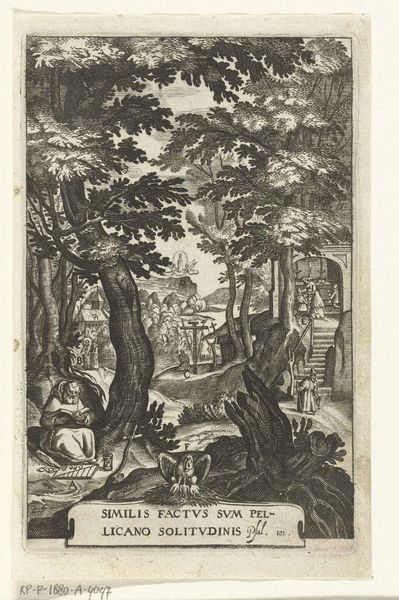
print, engraving
#
baroque
# print
#
dog
#
landscape
#
figuration
#
horse
#
islamic-art
#
genre-painting
#
history-painting
#
engraving
Dimensions: height 408 mm, width 517 mm
Copyright: Rijks Museum: Open Domain
Editor: This is an engraving called "Zondeval," dating from somewhere between 1630 and 1702, held at the Rijksmuseum, and attributed to an anonymous artist. It depicts the Fall of Man. There’s so much detail, it's quite overwhelming! What do you see in this piece that might not be immediately obvious? Curator: Let’s consider the materiality of this print. Engravings like this weren't just illustrations; they were a means of disseminating information and shaping cultural understanding. Think about the labour involved in creating such a detailed image. How does the reproductive nature of printmaking affect our understanding of the story of the Fall? Editor: That's a good point. I was so focused on the image itself, I didn't consider the process. Curator: Exactly! The widespread distribution of these prints meant the narrative of the Fall could reach a broad audience. And look closely – it’s not just about Adam and Eve. Consider the animals present and their symbolic roles in reinforcing dominant worldviews. How might the materials and method of production contribute to the social construction of morality here? Editor: So, you're saying the print itself, its accessibility and mode of creation, becomes part of the story, reinforcing the ideas of the time? It's more than just a picture; it's a cultural artifact. Curator: Precisely. The engraving is an object of consumption that embodies the socio-economic conditions of its creation, dictating to contemporary and later viewers the nature of the Fall. Understanding that the value isn’t simply the image, but how its creation reflects societal forces is key. Editor: I never thought about it that way. Seeing the labor and materials involved gives me a completely different appreciation for the artwork, it highlights its purpose of molding moral consciousness. Curator: That’s right! It underscores how art, even seemingly straightforward illustrations, are deeply entwined with their production and consumption. It really reveals to us period attitudes towards morality, class, and religious beliefs.
Comments
No comments
Be the first to comment and join the conversation on the ultimate creative platform.
